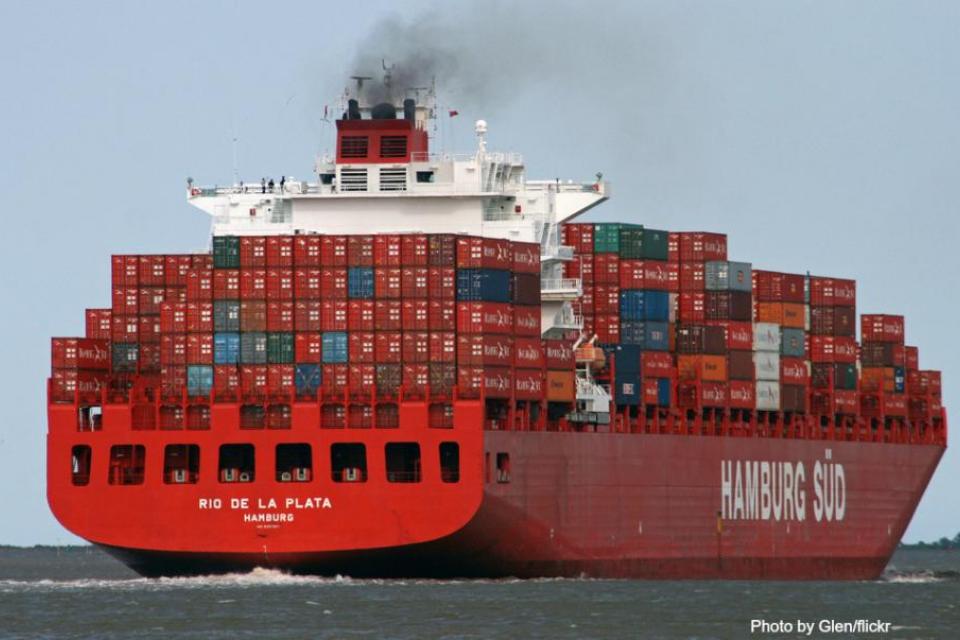Experts warn: As G-20 tariffs drop, carbon emissions skyrocket
Mongabay | 10 April 2019
Experts warn: As G-20 tariffs drop, carbon emissions skyrocket
by Ashoka Mukpo
- A study published by researchers in Japan shows that tariff reductions by G-20 countries will sharply increase global carbon dioxide emissions.
- In some countries, cheaper imports would lead to “embodied carbon emissions” rising by more than 100%.
- Experts say the findings demonstrate that trade arrangements have a heavy impact on emissions that outweighs the effect of national climate policies.
When the Trump administration slapped tariffs on aluminum and other products imported to the United States in early 2018, the move was widely seen as a major turn from a decades-long international trend toward free and unfettered trade. For years, through agreements hammered out at the World Trade Organization and via bilateral trade deals such as North American Free Trade Agreement, tariffs on imports across the world have steadily declined.
Supporters of this trend say that it has made countries richer and helped to tackle global poverty.
But a recent study published by researchers at Japan’s Kyushu University and the Research Institute for Humanity and Nature says that lower tariffs have come at a heavy cost to the climate. Future reductions by G-20 countries – the 20 largest economies in the world – are likely to lead to catastrophic increases in global carbon emissions. As the world struggles to address climate change, these researchers say if policymakers don’t account for the impact of lower tariffs on the amount of carbon released into the atmosphere, agreements like the Paris climate accord won’t be nearly as effective as hoped.
“We’re trying to argue that national environmental policies don’t work sometimes,” Keiichiro Kanemoto, an associate professor at the Research Institute for Humanity and Nature, said in an interview with Mongabay. “If we abolish tariffs for more free and open trade, it’s likely to do more harm.”
Government goals
Achieving national economic growth through trade has been a central goal of international diplomacy for decades, with the world’s most powerful countries pushing for reduced tariffs and open borders for investment. But the environmental impact of this growth has been severe, with carbon emissions associated with cross-border trade skyrocketing. Now, as countries commit to reducing their national carbon emissions through agreements like the Paris agreement, they’re often separately negotiating trade deals that will cause a steep rise in emissions elsewhere.
The study projects that “embodied carbon emissions” – the amount of carbon released into the atmosphere via consumption of imports – would rise significantly if tariff barriers were to drop or be eliminated. While the Trump administration has raised some tariffs to pressure its trading partners to accept more favorable terms, in most countries, tariffs have dropped significantly in recent decades. The Comprehensive and Progressive Agreement for Trans-Pacific Partnership that went into effect in December 2018, for example, led to tariff reductions in six countries. Taken together, the economies of the 11 countries involved in the pact represent more than 13% of the global gross domestic product.
As tariffs are reduced in a given country, the prices of imported goods drop, leading to a higher demand for them. If those goods are produced in countries with lax environmental standards, that can cause a massive rise in carbon emissions as companies kick into higher gear to meet that demand. The study focused on G-20 countries, calculating that a 1% cut to tariffs on natural gas imports alone in those countries would result in 2,779 additional metric tons (3,038 tons) of carbon dioxide released into the atmosphere per year.
In a scenario in which those countries were to remove their tariff barriers altogether, the study indicates that the impact on the climate would be overwhelming. Under this “zero tariff” scenario, increased consumption of imports in just the five “BRICS” countries (Brazil, Russia, India, China and South Africa) would cause an additional 72,307 metric tons (79,705 tons) of carbon dioxide to be released into the atmosphere per year.
Tariff-risky industries
According to the study, increased demand in the mining and manufacturing sectors resulting from lower tariffs would lead to a particularly large rise in carbon emissions. Were Saudi Arabia to eliminate tariffs in those two sectors, for example, the study predicts that carbon dioxide emissions associated with imports to that country would rise by nearly 250% per year. For Mexico and Argentina, the increase would be over 150%.
“This is very big compared to what was previously thought,” Kanemoto said.
The study points toward the deep impact of international trade on the effort to tackle climate change. And experts say that for climate strategies to work, negotiations over trade agreements can’t be disassociated from the debate over how to achieve reductions in national carbon emissions.
“At all these different levels, you’re seeing trade rules run into climate goals,” said Ben Lilliston, director of climate strategies at the Minnesota-based Institute for Agriculture and Trade Policy. Lilliston has also published research about the impact of free trade agreements on carbon emissions.
“The lowering of tariffs through trade agreements has facilitated this offshoring of emissions, and now if we want to address that, we’re going to have to not just address emissions within our country, but also within what we’re importing,” Lilliston said. “That’s going to require a really serious reconsideration of trade deals and how they work.”
According to Kanemoto, the study demonstrates that the implementation of national emissions policies alone won’t be enough to address climate change, particularly when companies can move production to countries with weak environmental laws and still take advantage of lower tariffs.
“Policymakers have to think at the global level,” he said. “We need a situation where global carbon tax rates don’t change country by country. Otherwise, companies can avoid regulations.”






